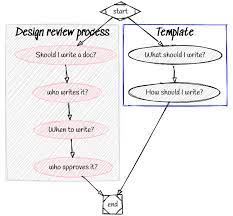Mastering the Art of Software Design and Development
The Art of Software Design and Development
Software design and development are crucial processes in creating efficient, reliable, and user-friendly applications. Whether it’s a simple mobile app or a complex enterprise system, the principles of software design and development remain consistent.
Software Design
Software design involves planning how a software system will be structured and how its components will interact with each other. It encompasses architectural decisions, interface design, data structures, and algorithms. A well-thought-out design lays the foundation for a successful software project.
Key Aspects of Software Design:
- Modularity: Breaking down the system into manageable modules that can be developed and tested independently.
- Abstraction: Hiding complex implementation details behind simple interfaces to improve clarity and maintainability.
- Scalability: Designing the software to accommodate growth in data volume or user traffic without compromising performance.
- Flexibility: Building the software in a way that allows for easy modifications or additions in the future.
Software Development
Software development is the process of turning a software design into a functioning product. It involves writing code, testing it, debugging issues, and optimizing performance. Effective collaboration among developers, testers, designers, and project managers is essential for successful software development.
Phases of Software Development:
- Requirements Analysis: Understanding the needs of users and defining the features that the software should have.
- Design: Translating requirements into a detailed plan for how the software will be implemented.
- Coding: Writing code according to the design specifications while following best practices and coding standards.
- Testing: Verifying that the software functions correctly and meets all requirements through various testing methods.
- Deployment: Releasing the software to users after thorough testing and ensuring compatibility with different environments.
- Maintenance: Providing ongoing support, updates, and enhancements to keep the software relevant and secure.
In conclusion, software design and development are intricate processes that require careful planning, expertise, and collaboration. By following best practices in both areas, developers can create robust applications that meet user needs effectively. Continuous learning and adaptation to new technologies are essential for staying competitive in today’s fast-paced digital landscape.
Top 5 FAQs About Software Design and Development: Principles, Impact, Challenges, and Agile Solutions
- What is software design and development?
- What are the key principles of software design?
- How does software design impact the overall quality of a product?
- What are the common challenges faced during software development?
- How can agile methodologies improve the efficiency of software design and development?
What is software design and development?
Software design and development refer to the systematic processes involved in creating software applications. Software design focuses on planning the structure, components, and interactions of a software system, while software development involves implementing the design through coding, testing, and deployment. It encompasses various stages such as requirements analysis, design, coding, testing, deployment, and maintenance. Effective software design and development are essential for producing high-quality, reliable, and user-friendly applications that meet the needs of users and businesses.
What are the key principles of software design?
One frequently asked question in the realm of software design and development is, “What are the key principles of software design?” The key principles of software design revolve around modularity, abstraction, scalability, and flexibility. Modularity involves breaking down a system into manageable modules for independent development and testing. Abstraction focuses on concealing complex implementation details behind simple interfaces to enhance clarity and maintainability. Scalability ensures that the software can handle growth in data volume or user traffic without sacrificing performance. Lastly, flexibility entails designing the software to accommodate future modifications or additions seamlessly. These principles form the foundation for creating well-structured, efficient, and adaptable software systems.
How does software design impact the overall quality of a product?
The impact of software design on the overall quality of a product cannot be overstated. A well-thought-out and meticulously executed software design lays the groundwork for a product that is not only functional but also reliable, scalable, and maintainable. By focusing on aspects such as modularity, abstraction, scalability, and flexibility during the design phase, developers can create a system that is easier to understand, test, and enhance. A robust design reduces the likelihood of bugs and errors, improves performance, and enhances user experience. Ultimately, investing time and effort in software design leads to a higher-quality product that meets user expectations and stands the test of time.
What are the common challenges faced during software development?
During software development, several common challenges often arise that can impact the success of a project. One prevalent challenge is managing changing requirements, as stakeholders may introduce new features or modifications during the development process, leading to scope creep and potential delays. Another challenge is ensuring effective communication among team members, as miscommunication can result in misunderstandings, errors, and inefficiencies. Additionally, maintaining code quality and scalability while meeting deadlines poses a significant challenge for developers. Addressing these challenges requires proactive planning, clear communication, agile methodologies, and continuous collaboration to navigate the complexities of software design and development successfully.
How can agile methodologies improve the efficiency of software design and development?
Agile methodologies can significantly enhance the efficiency of software design and development by promoting iterative and collaborative approaches. Unlike traditional waterfall methods, agile frameworks like Scrum or Kanban allow for continuous feedback, adaptation, and prioritization of tasks throughout the development process. This iterative nature enables teams to respond quickly to changing requirements, identify issues early on, and deliver incremental value to users. By fostering close collaboration among team members and stakeholders, agile methodologies encourage transparency, communication, and shared ownership of the project goals. Ultimately, embracing agile practices can lead to faster delivery of high-quality software that better aligns with user needs and market demands.




